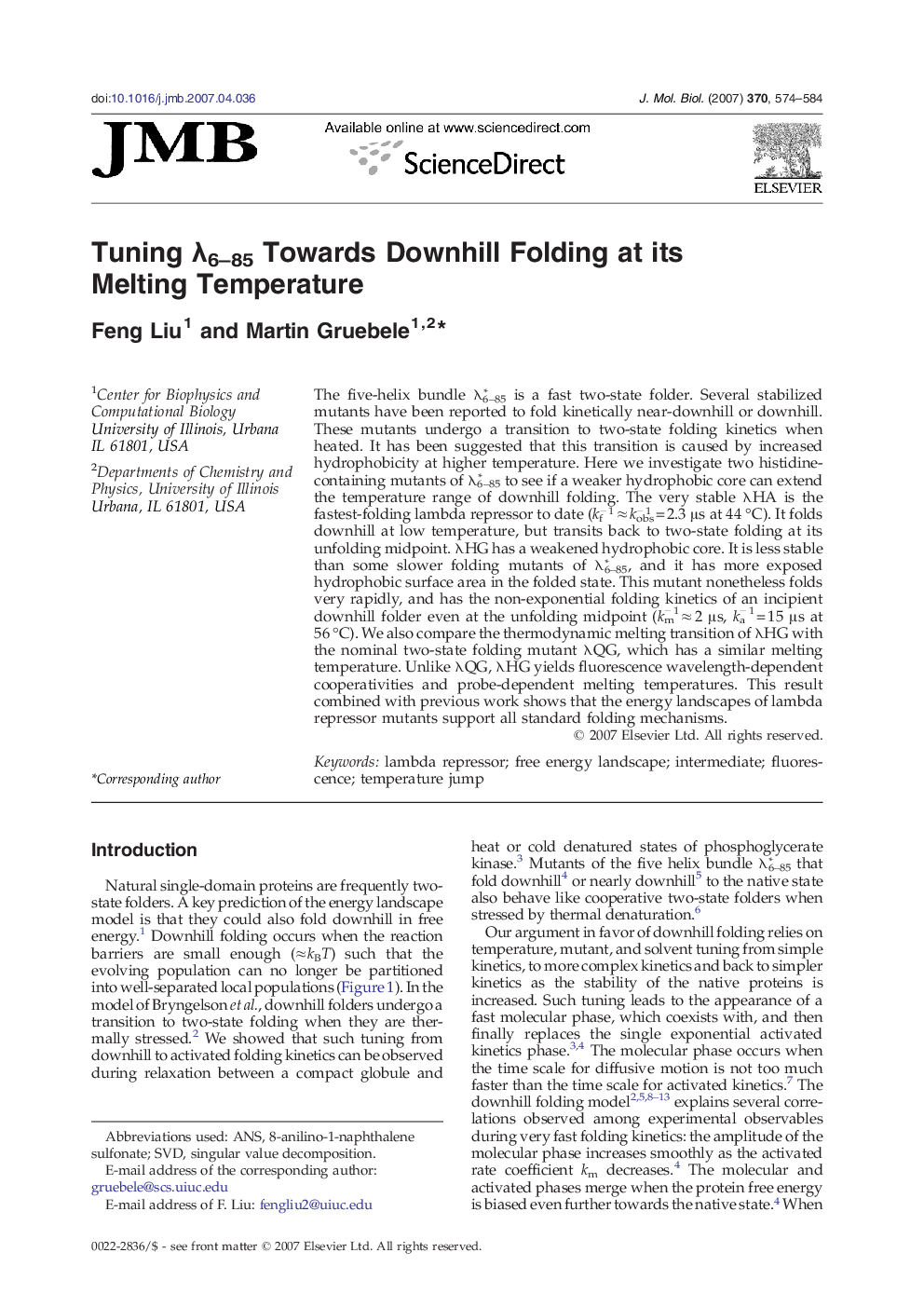| کد مقاله | کد نشریه | سال انتشار | مقاله انگلیسی | نسخه تمام متن |
|---|---|---|---|---|
| 2188348 | 1096163 | 2007 | 11 صفحه PDF | دانلود رایگان |

The five-helix bundle λ6–85* is a fast two-state folder. Several stabilized mutants have been reported to fold kinetically near-downhill or downhill. These mutants undergo a transition to two-state folding kinetics when heated. It has been suggested that this transition is caused by increased hydrophobicity at higher temperature. Here we investigate two histidine-containing mutants of λ6–85* to see if a weaker hydrophobic core can extend the temperature range of downhill folding. The very stable λHA is the fastest-folding lambda repressor to date (kf− 1 ≈ kobs− 1 = 2.3 μs at 44 °C). It folds downhill at low temperature, but transits back to two-state folding at its unfolding midpoint. λHG has a weakened hydrophobic core. It is less stable than some slower folding mutants of λ6–85*, and it has more exposed hydrophobic surface area in the folded state. This mutant nonetheless folds very rapidly, and has the non-exponential folding kinetics of an incipient downhill folder even at the unfolding midpoint (km− 1 ≈ 2 μs, ka− 1 = 15 μs at 56 °C). We also compare the thermodynamic melting transition of λHG with the nominal two-state folding mutant λQG, which has a similar melting temperature. Unlike λQG, λHG yields fluorescence wavelength-dependent cooperativities and probe-dependent melting temperatures. This result combined with previous work shows that the energy landscapes of lambda repressor mutants support all standard folding mechanisms.
Journal: Journal of Molecular Biology - Volume 370, Issue 3, 13 July 2007, Pages 574–584